[ad_1]
When you’re looking for guidance on companion planting to improve your organic garden, it’s likely that you’ve come across a vast array of charts.
Companion planting charts tell you which combinations are supposed to work together, but they don’t typically tell you why these particular pairings are recommended.
So, how do we know these partnerships actually work?
That’s what we’re going to dig into here.
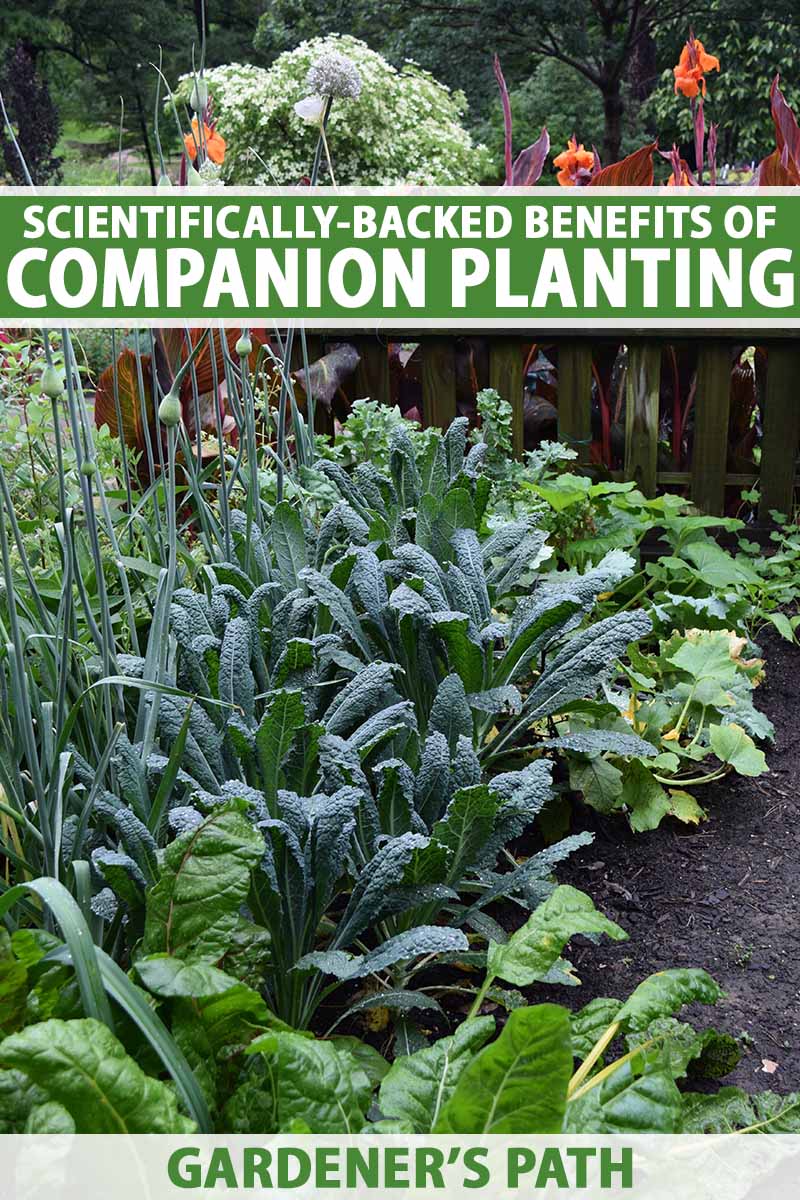

We link to vendors to help you find relevant products. If you buy from one of our links, we may earn a commission.
I’m not going to try to debunk any claims about companion combinations. What I am going to do is explain why certain partnerships are beneficial – and leave you to make your own call about the other claims you may encounter.
The goal of this article is to reveal some of the science and logic behind companion pairings, and to help you develop your own strategy – so that you don’t need a chart.
Ready for a look at what we’re going to cover?
The Scientifically-Backed Benefits of Companion Planting
Before we get started with exploring these benefits, let’s take a big picture view.
When we ask the question, “Why do companion pairings work” the answer might be summed up in a single word: diversity.
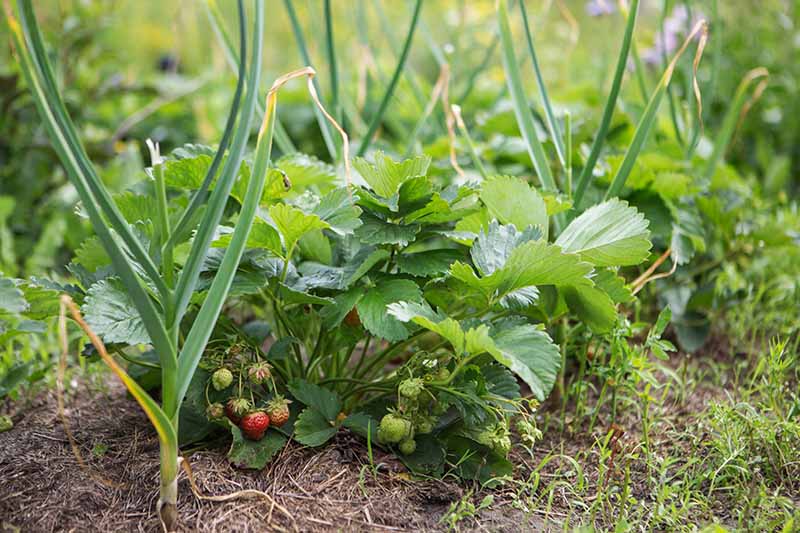

The benefits of diversity in the garden have been apparent since at least the 1800s when Charles Darwin, naturalist and proponent of the theory of evolution, pondered the subject.
In his book “Darwin’s Backyard,” available on Amazon, author James T. Costa quotes Darwin as saying, “A greater absolute amount of life can be supported in any country or on the globe when life is developed under many and widely different forms, than when under a few and allied forms.”
Let’s open a more modern window on that sentiment. A town, let’s say, can support more people and do it more effectively if community members have diverse roles than if they all have very similar roles.
Makes sense, right? I mean, if every single person wants to be a firefighter, who’s going to teach at the school, build the houses, or grow the food?
The members of a community need to take up different roles in order for the community to be successful, and this is true whether the community is made up of humans, or of plants.
Darwin came to this conclusion through his own backyard experiments and observations of the natural environment, but also by reading about those undertaken by his naturalist predecessors.
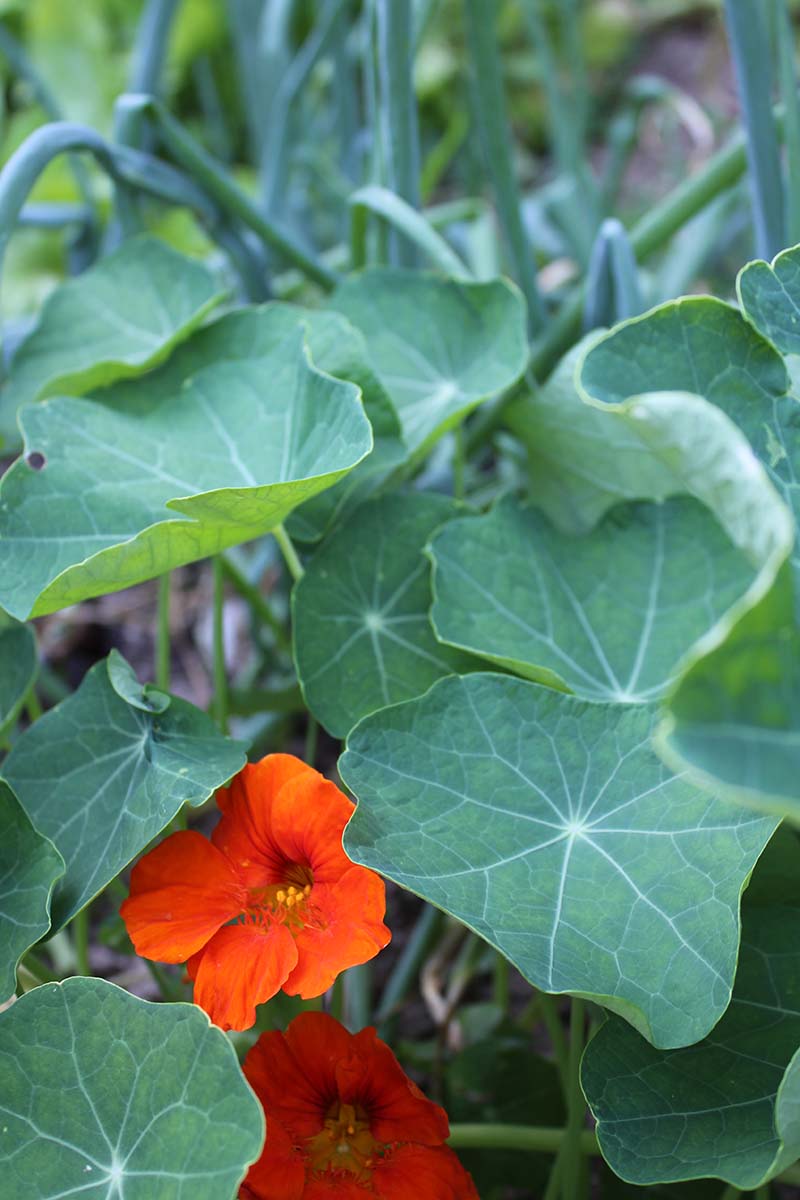

Like Darwin, today’s scientists are still studying the use of diversity in agriculture and gardening, in order to develop a more scholarly foundation in support of this practice – with some interesting results.
Much scientific research backs the use of companion pairings, showing benefits such as biological pest control, protection, support, and the sharing of soil resources.
Keep reading and I’ll get into the nitty-gritty of each of these issues.
Biological Pest Control
For those of us who want to avoid or reduce the use of chemical pesticides in our gardens, biological pest control is a necessary strategy.
Biological pest control focuses on using plants and animals – instead of chemicals – to control pests.
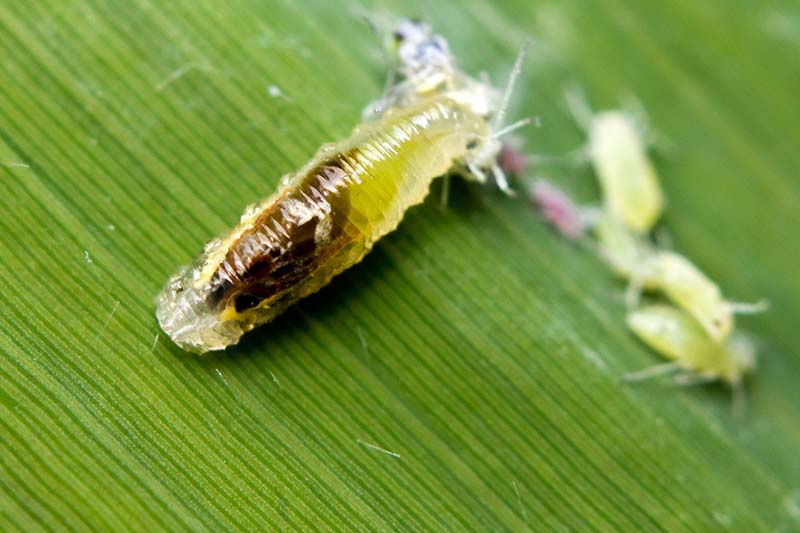

Remember that a bug-free garden is not the goal here, nor is achieving this actually possible.
Even with chemical pest control, the goal is to keep pests from doing too much damage to our crops rather than eradicating pests altogether.
Companion pairings can protect our crops by helping to keep pest populations low in several different ways. Let’s take a look.
Attracting Natural Enemies
One of the most visible ways companion planting helps to control pest damage is by attracting other insects – in this case, predatory and parasitoid insects that serve a beneficial purpose in the garden.
These are often called “natural enemies.”
When you see a predator wasp dragging a cabbageworm across the ground, you’ll know that old adage is true – my enemies’ enemies are my friends.
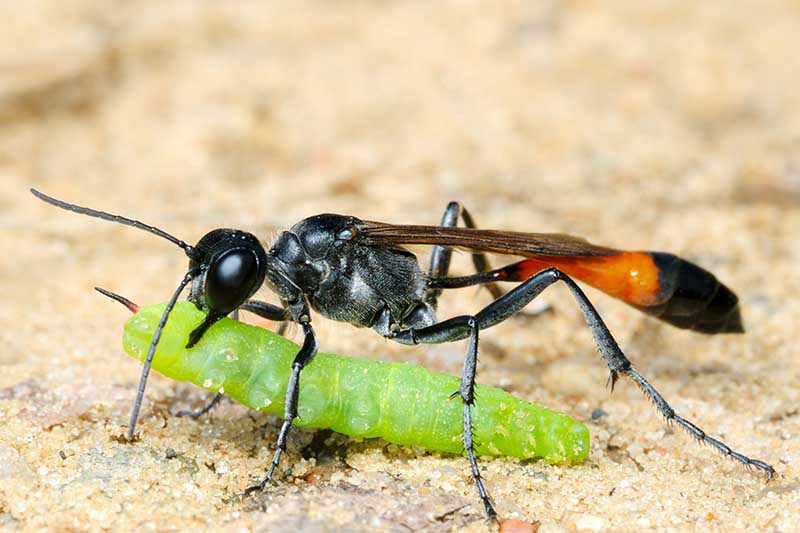

Predatory and parasitoid insects not only target moth larvae such as imported cabbage worms and cabbage loopers, but also much smaller garden pests like aphids.
A study published in the African Journal of Agricultural Research in August 2016 compared the presence of aphid predators in a kale monoculture versus kale interplanted with companion species. These companions included African marigolds, dill, cilantro, and calendula.
Not surprisingly, the numbers of natural enemies increased with the use of companion pairings.
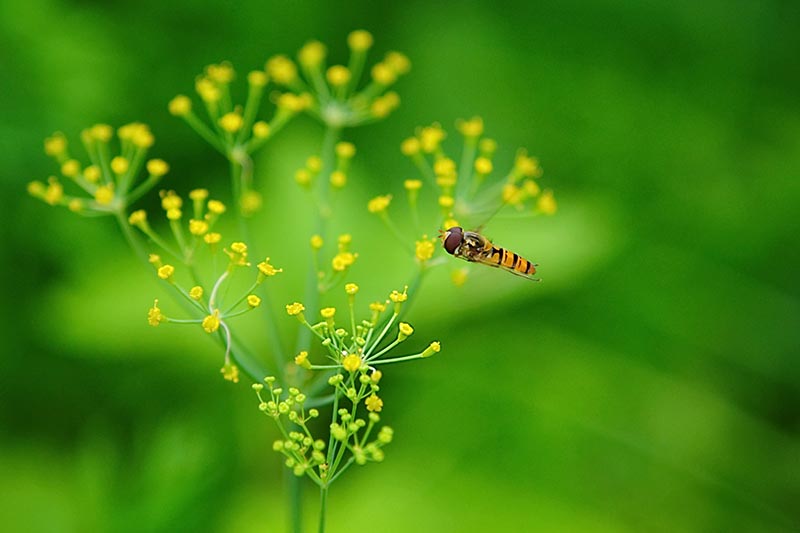

By including “insectary plants” in your garden, or those that are attractive to predatory and parasitoid insects, natural enemy helpers will be able to hide, breed, and feed.
Easily recognizable ladybugs, hoverflies, and parasitic wasps will be your allies in pest control. But don’t forget, you may not recognize their larval forms, so never kill a bug you don’t recognize.
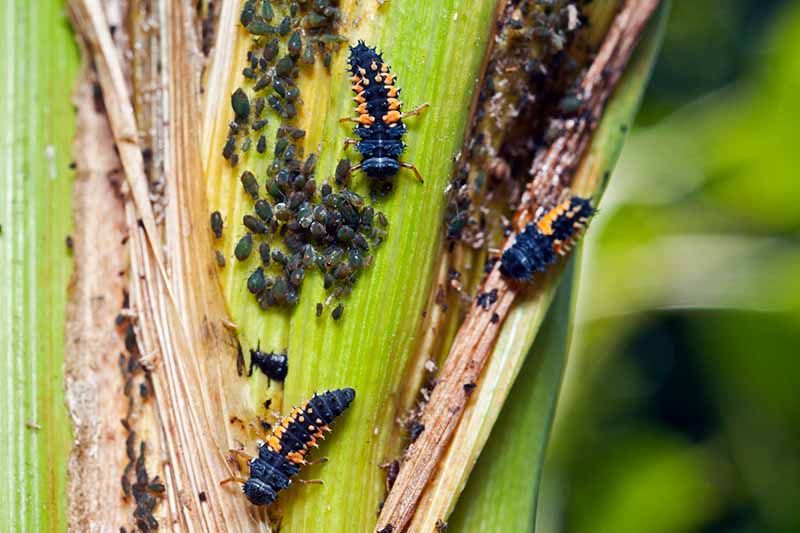

While the larvae of these helpful insects often eat pests, the adult insects tend to feed on nectar and pollen.
Including a wide variety of herbs and flowers in your garden will supply insects with needed resources, increasing the overall populations of beneficial insects and pollinators.
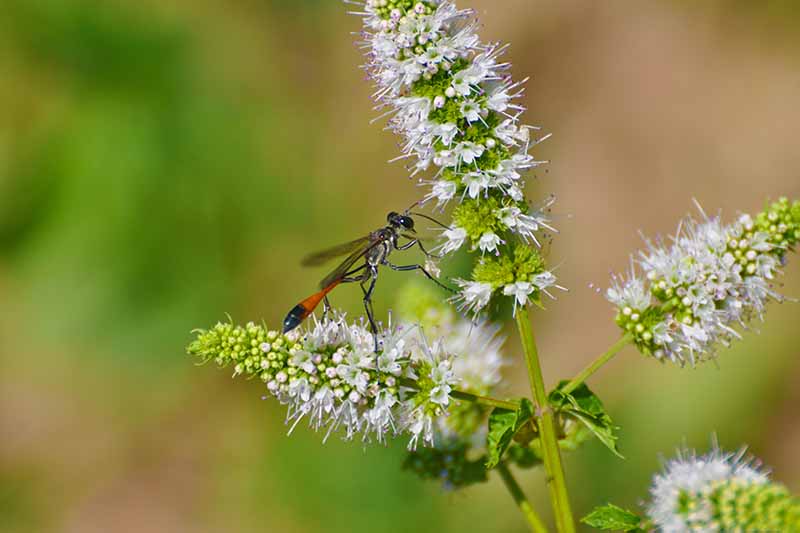

Providing a succession of flowers from early spring, with bulbs, all the way to fall with fall-blooming perennials such as asters, will encourage beneficial insects to make your yard one of their top hangouts.
A wide variety of bloom types, such as you might include in your native wildflower garden, will also attract a diverse assortment of beneficials.
Other predatory and parasitic insects that can be of help in controlling pests include collops beetles, soldier beetles, long-legged flies, midges, damsel bugs, big-eyed bugs, minute pirate bugs, hornets, yellow jackets, spiders, earwigs, assassin bugs, ambush bugs, and praying mantises.
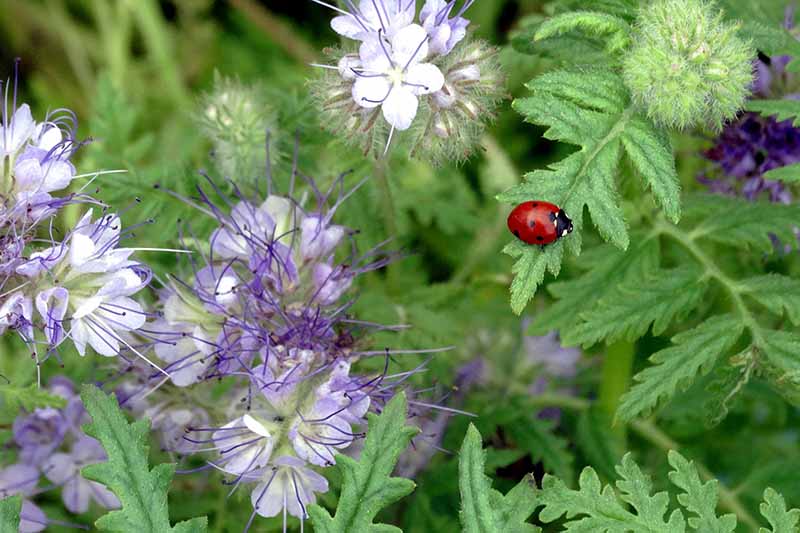

There are many different flowering plants you can include as members of your insectary, including lacy phacelia, coriander, cosmos, dill, buckwheat, alyssum, marigold, cowpea, white clover, fennel, mint, rosemary, and lavender.
To learn more about growing a selection of some of these multi-purpose herbs at home, read our article on the top five Mediterranean herbs.
If your garden environment is a relatively blank slate and you need a little more help, you can purchase predatory insect adults or larvae to help in your garden.
Arbico Organics carries many varieties of predatory and parasitoid insects. Just make sure to release them at a time when you’re sure you have a diverse supply of flowers available for them to forage nectar and pollen from.
And if you’re just as fascinated as I am by the wonderful world of predatory insects, I bet you’ll enjoy Mary Gardiner’s book, “Good Garden Bugs: Everything You Need to Know about Beneficial Predatory Insects.” It’s available from Amazon.
Good Garden Bugs: Everything You Need to Know about Beneficial Predatory Insects
It’s important to remember that not all pests can be controlled in this way. However, for control of the vast majority of invertebrate garden pests, predatory and parasitoid insects will go a long way in your favor.
Deterring Pests with Smells
To fight garden pests, it can be helpful to understand the ways in which they locate their host plants – and one of these is through their olfactory organs, or in other words, via their sense of smell.
Much of the traditional literature on companion planting relies heavily on fragrant herbs or alliums that are thought to cover up the odors of host species. Luckily for us, there is scientific literature to back this up.
Researchers who conducted one study tried – successfully – to use French marigolds to reduce populations of whiteflies on short vine tomatoes in a greenhouse setting.
It was the volatile compound limonene in the marigolds that had a slowing effect on the whiteflies. Limonene diffused mechanically also helped.
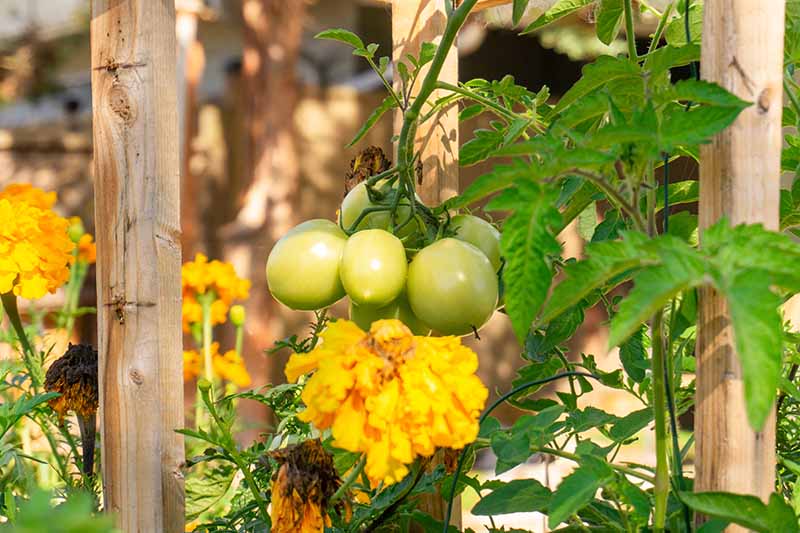

African marigolds also release chemicals from their roots known as thiophenes, which repel harmful nematodes.
Another study was conducted to try using fragrant herbs (rosemary, lavender, and basil) to reduce aphid populations on sweet pepper plants in a greenhouse setting.
Rosemary had a protective effect against aphid populations when it was placed 18 inches from the sweet peppers.
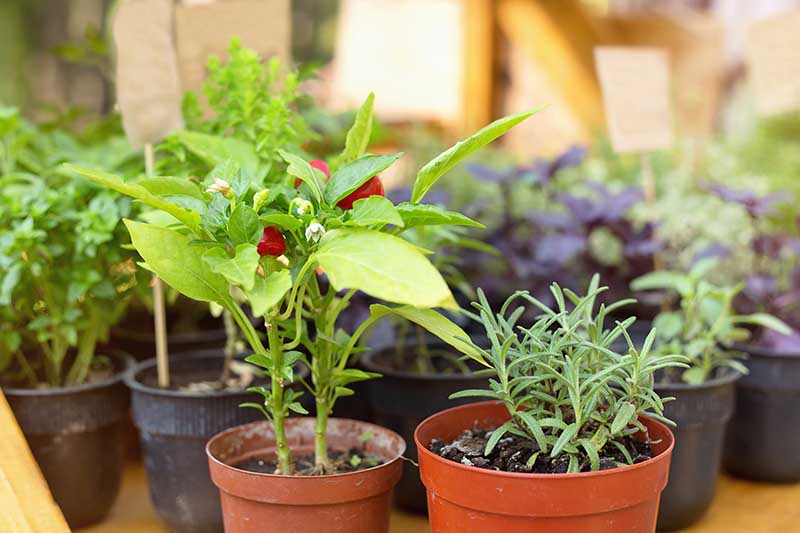

Alliums – garlic, onions, shallots, and leeks – are another type of companion plant commonly cited for warding off pests with their strong smell.
A paper that dug deep into companion pairings confirmed this, and found that these garden buddies are helpful in repelling moths, cockroaches, mites, aphids, and flea beetles.
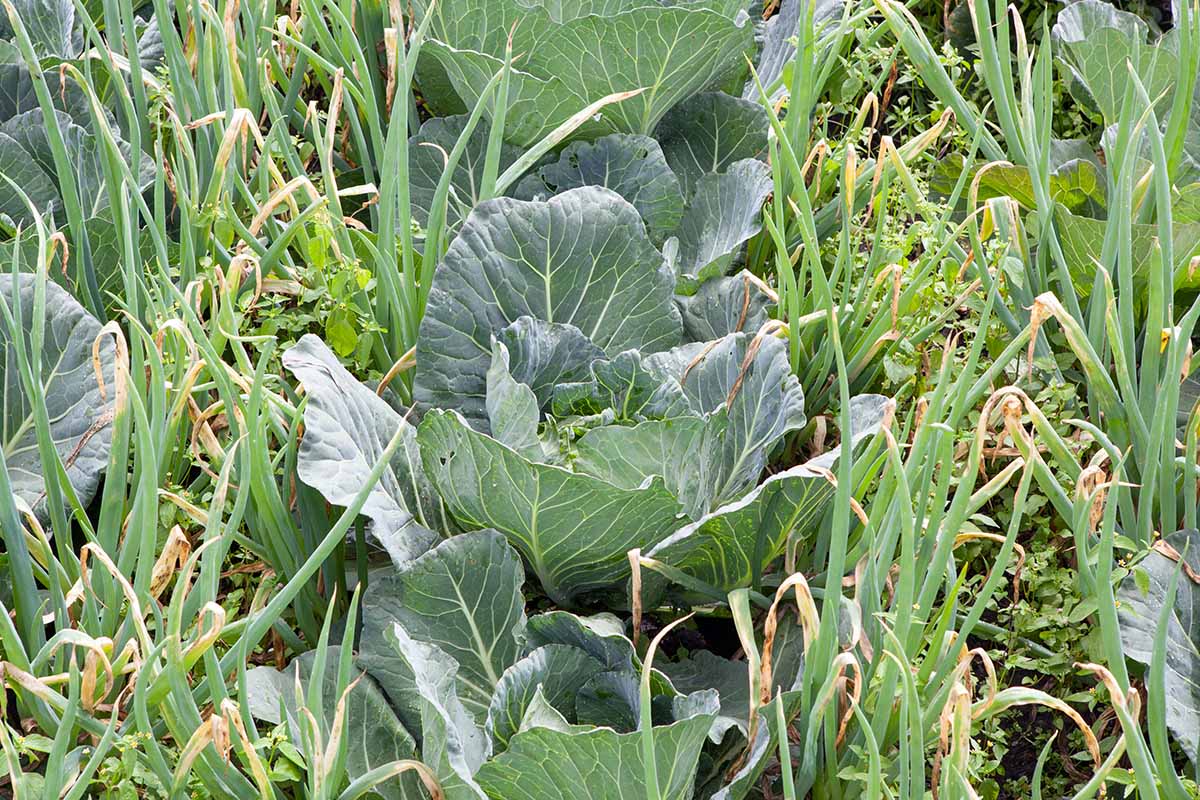

Authors of the same paper reported that numerous aromatic species can repel pests away from brassicas, including sage, rosemary, hyssop, thyme, dill, southernwood, mint, tansy, chamomile, and nasturtium.
Does this mean you can stop worrying about pests if you include fragrant herbs in your garden? Not quite. Just because aromatic herbs repel some pests does not mean all pests will be repelled.
For example, I have personally witnessed grasshoppers devouring trays of marigolds, ignoring these flowers’ built-in chemical repellents.
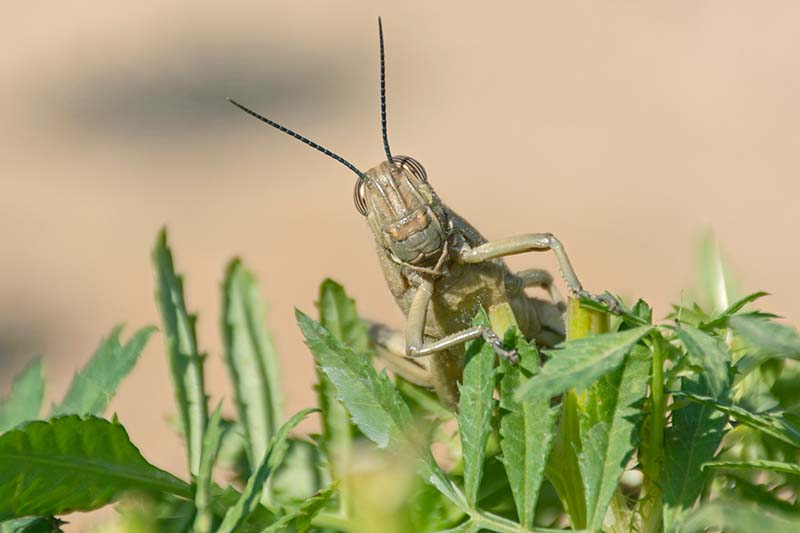

However, aromatic herbs will prove useful as part of your overall strategy to keep pest populations in check. And some of these aromatics will do double duty, attracting predatory insects as well.
Creating Visual or Physical Barriers
Another way pests locate their host species is by looking for them visually. Using companion pairings as visual or physical barriers may be just as effective as aromatic barriers.
A group of researchers from the UK studying visual deterrence found that pests were confused when their preferred host plant was surrounded by green foliage – even fake green foliage made from paper!
Forced to search harder for their preferred plant, many pests gave up, which resulted in fewer infestations. The key, though, is that these visual barriers have to be green.
These researchers determined that crops surrounded with other plants were more camouflaged from pests compared to crops surrounded by bare soil.
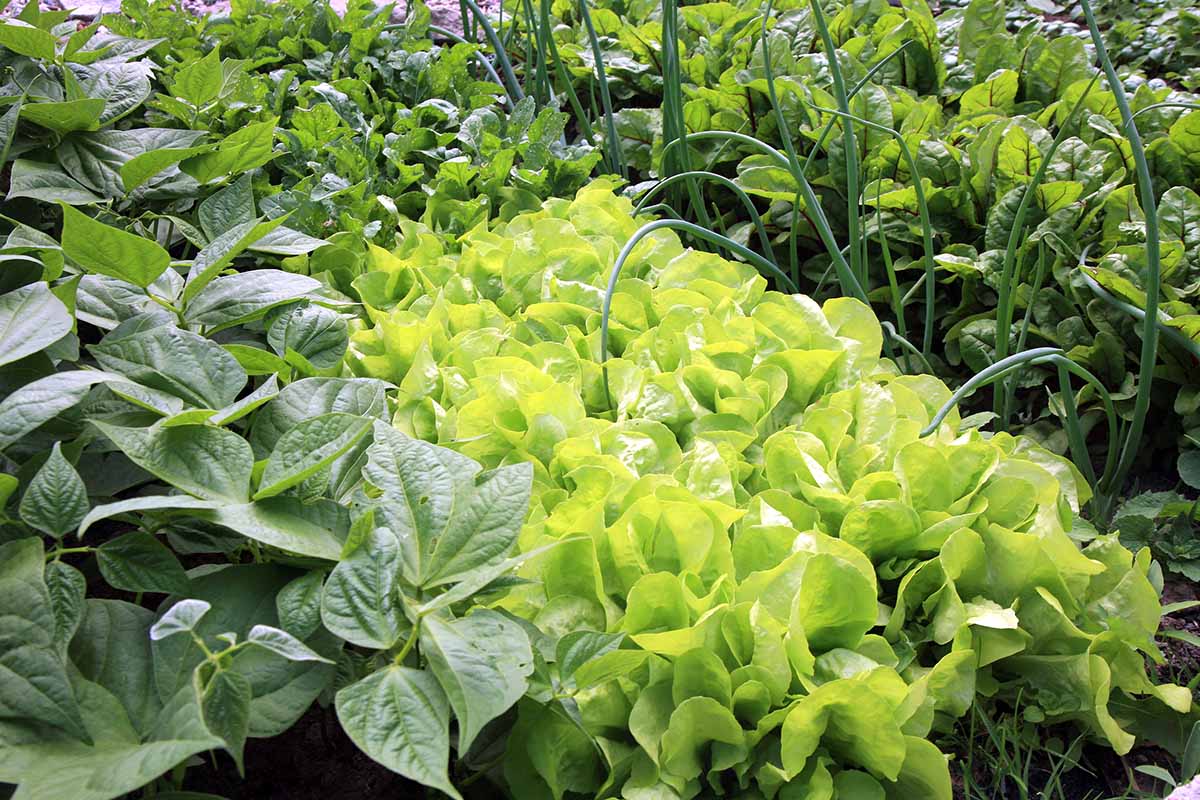

Taller companions such as corn, sunflowers, sorghum, sesame, and millet have been used successfully as physical barriers to block pests from accessing targeted crops. (Although sunflowers can present problems of their own – more on that later.)
Using barrier plants is also effective in protecting crops from disease spread by aphids, as evidenced in a paper published in the September 2006 issue of Virus Research.
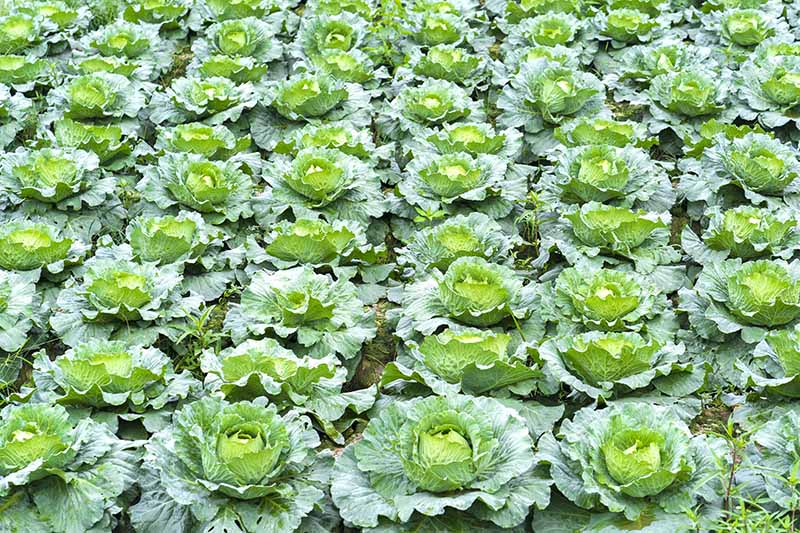

In contrast to polycultures, gardens or agricultural areas containing a large diversity of species, monocultures make life very easy for pests.
If you were hungry, which would you choose – a field full of nothing but your favorite food, or a field where you had to crawl, jump, fly, or be blown around uninteresting green things that looked but didn’t taste like food to you?
Polycultures are clearly less attractive to pests, and we can use them to our advantage.
Trap Cropping
You can also use pests’ food preferences to your advantage in another way – through trap cropping.
Trap cropping requires knowing what your local insect pests like to eat, finding something they like even more (the trap crop), and then growing that trap crop adjacent to the crop you’re trying to protect.
It’s preferable to plant the trap crop ahead of the main crop, giving it some time to become established.


This technique concentrates the pests away from your main crop. Once the trap is infested with pests, it should be removed from the garden and destroyed.
Experimenters have successfully used alfalfa as a trap crop for cotton, snap beans as a trap crop for soybeans, early potatoes for later potatoes, sunflowers for tomatoes, and yellow rocket for brassicas.
A technique referred to as “push-pull” uses trap cropping in conjunction with repellent species, repelling the pests away from the valued crop and driving them towards the trap crop.
This method shows promise in large agricultural settings.
For home gardeners dealing with severe pest problems, planting trap crops in conjunction with repellent aromatic crops is certainly worth a try. But remember – the appearance of one or two bugs doesn’t necessarily mean you need to start trap cropping.
The goal is not to eradicate any and all pests from your garden, so trap cropping should only be used when pest damage has been significant.
Find more tips on using trap crops here.
Protection and Support
Along with pest control, companion pairings can help in still other ways.
They can provide protection and support for your main crops in the form of weed control, erosion control and water retention, shade creation, and structural support.
Let’s briefly examine all of these.
Controlling Weeds
Companion plants can assist your main crop by acting as a living mulch, covering bare soil where weeds are likely to pop up.


A paper in Experimental Agriculture showed that growing kale and beans together reduced the presence of a problematic weed known as redroot pigweed (Amaranthus retroflexus), when compared with growing the two crops separately.
If you get a jump on the weeds in your garden and plant a cover crop that will take up space before the weeds even sprout, this will be even more effective.
My philosophy is that if you don’t want a weed growing somewhere, plant something else there to let the weed know that spot is already taken!
And cover cropping can help with more than just weed control. Learn more in our article dedicated to the art of cover cropping.
Controlling Erosion and Retaining Water
There are other issues with bare soil besides weeds: erosion and water evaporation, two things that go hand in hand since eroded soil is more likely to suffer from poor water retention.
Ground covers interplanted between your main crops will help to reduce erosion and promote water retention.


An article in Weed Science enumerates the advantages of growing hairy vetch as a living mulch, among them “increased soil organic matter, improved soil structure and water infiltration, decreased water runoff, reduced surface soil temperature and water evaporation, […] and increased soil productivity.”
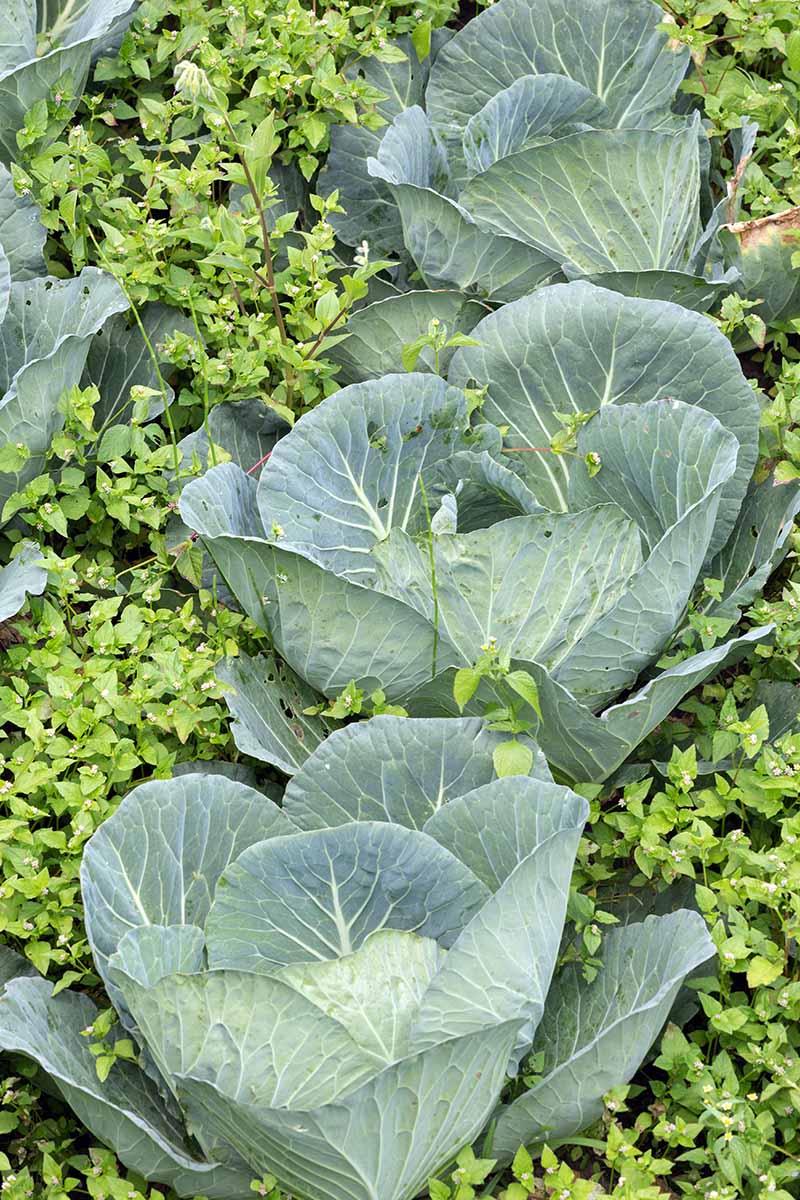

As an added plus, soil-protecting ground covers can be quite attractive.
I use low-growing, delicately flowered sweet alyssum as a ground cover interplanted between some of my veggie crops – it keeps the soil covered and adds a delightful touch of beauty that the sweat bees and other pollinators appreciate as well.
Clearly, using companions as ground covers is yet another benefit of this practice. Just make sure you choose a ground cover that won’t compete with your main crops for resources – we’ll get to that a little later.
Creating Shade
Another way to reap the benefits of companions is to plant heat-sensitive species in the shade of more heat-tolerant ones.
Have you ever heard of shade-grown coffee? Growing coffee plants under the canopy of taller trees replicates the plants’ natural ecological niche, and as it turns out, is a much more sustainable way of producing coffee overall.
You can apply this concept in your own garden. If you don’t have any naturally shady areas in your raised beds, for example, you can create shade with taller, more sun- and heat-resistant crops.
By growing these taller veggies to the south of smaller, less heat-tolerant plants, such as cool season crops or young transplants, we can help to keep those more vulnerable specimens cooler during the heat of the summer.
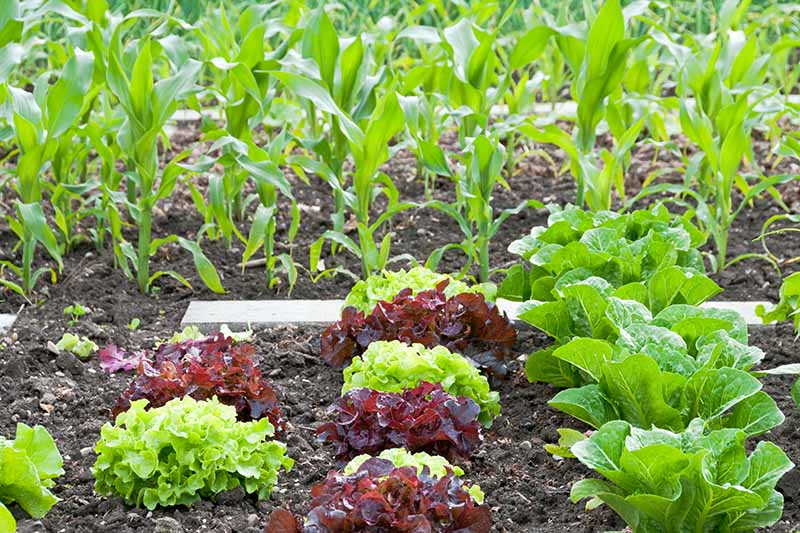

Even some species that typically require full sun may benefit from some shade in particularly hot and dry climates or weather.
For instance, lettuces and other types of leafy greens can resist bolting longer if grown in the shade of a taller veggie, such as corn.
Another way to use the shade of taller garden members is to plant delicate transplants in the shade of these taller crops, to help the transplants get established. I often use this strategy myself.
I recently planted herb starts under the cover of fast-growing buckwheat until the herbs got used to their new home. Once the herbs were established, I cut back the buckwheat and put it on the ground as a green mulch.
Compared to the herbs I planted that did not have shade-giving cover crops in the area at planting time, they fared much better.
Providing Structural Support
Tall garden vegetables like corn have historically been used to create structural support for pole beans in the Native American three sisters growing method.
The corn provides a trellis for the beans, and when the beans climb up the corn stalks, they help to anchor the corn, preventing it from breaking in the wind.
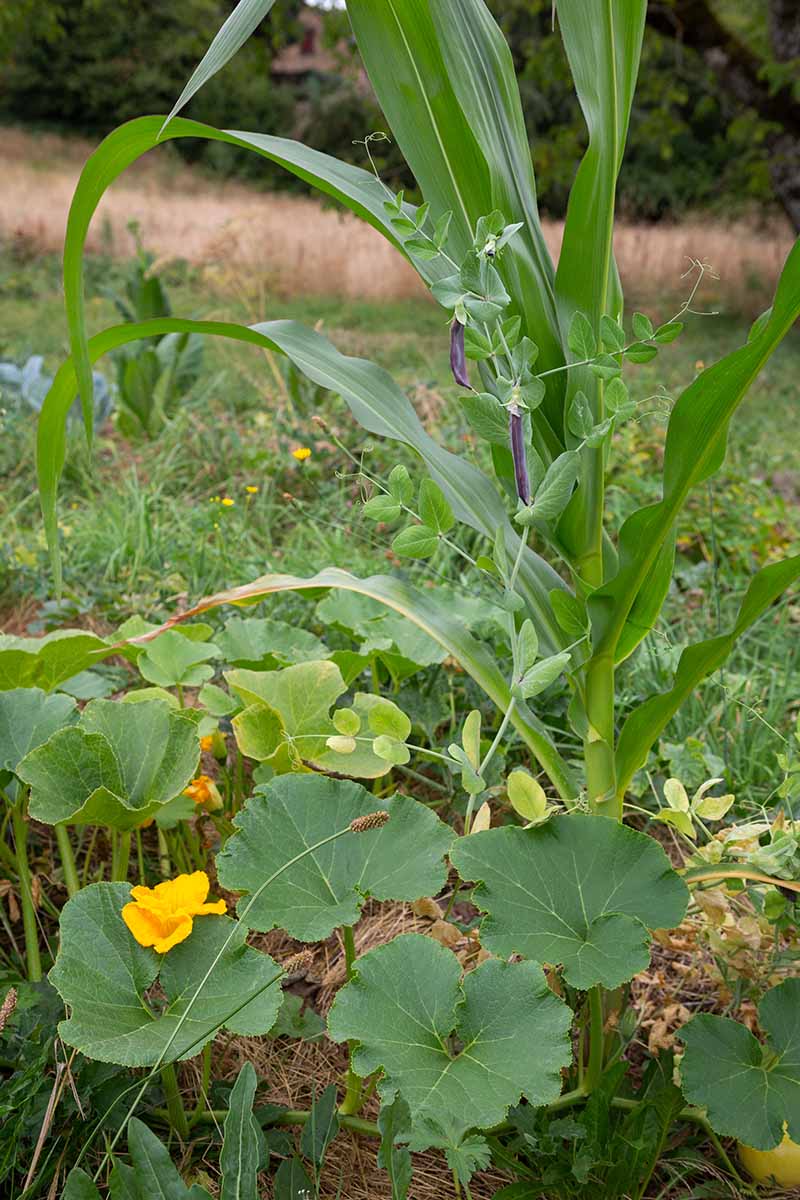

What’s more, a study in Ethnobiology Letters published in 2016 looked at yields from three sisters growing systems and found that a crop of interplanted corn, beans, and squash produced more calories and protein than any of the three when grown individually as a monoculture.
Native American Gardening: Stories, Projects, and Recipes for Families
You can learn more about the three sisters growing method as well as other Native American gardening techniques in “Native American Gardening: Stories, Projects, and Recipes for Families,” by Michael J. Caduto and Joseph Bruchac. It’s available from Amazon.
Sharing Soil Resources
We’ve looked at how companion pairing helps to control pests, and how this practice can provide protection and support.
Another way this method can be beneficial is by growing groups of plants that will share rather than competing for soil resources, in terms of both nutrients and space.
Sharing Soil Nutrients
Let’s talk about nutrients first.
We’ve discussed how a polyculture system will perform better than a monoculture because it makes finding plants harder for pests, but that’s not the only advantage this planting practice has to offer.
Another advantage of growing in polycultures is that the members of this mini community aren’t all competing for exactly the same nutrients. This allows their use of soil nutrients to be more like sharing and less like a competition.
In a given vegetable plot, there are only so many nutrients available in the ground. If you plant just one type of crop, the plants will all be competing to use the same nutrients, whereas if you plant a mix of crops with different nutritional requirements and foraging strategies, there will be less competition, and less nutrient depletion as a result.
This is illustrated in “The Ecology of Agroecosystems” by John Vandermeer, available on Amazon.
Vandermeer shows that to grow the equivalent amount of maize and beans, a polyculture system would require only 1 hectare (2.47 acres) of land, while a monoculture would require 1.46 hectares (3.60 acres).
That’s quite a big difference – especially if you think about the small amount of space that most gardeners are working with in their own backyards, where every square foot is valuable.


Although nitrogen is not the only nutrient that plants require, the principle of sharing nutrients is perhaps easiest to understand when we think about this element.
Some vegetables are commonly called “heavy feeders,” meaning they require lots of nitrogen. Others are referred to as “light feeders.” And still others, the nitrogen fixers, are sometimes referred to as “givers.”
Nitrogen fixers are able to take nitrogen from the air and store it in their root nodules for later use, meaning they do not need to take nitrogen from the ground, and will add nitrogen to the soil when they die.
Legumes – including alfalfa, clover, peas, beans, vetch, lentils, soybeans, and peanuts – are just this sort of companion. Essentially, legumes make good growing buddies because they aren’t taking away available nitrogen from the ground.
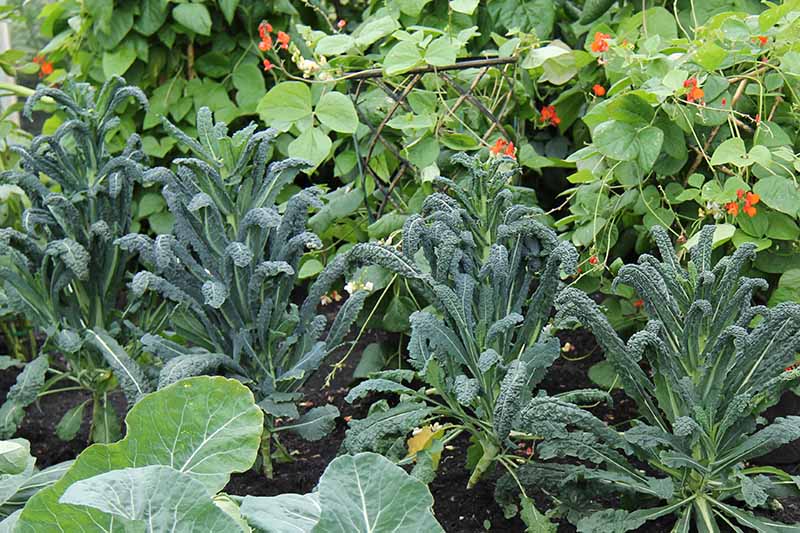

Although there are some exceptions, in general, vegetables that are grown for their leaves (such as cabbage) or fruits (such as tomatoes) are heavy feeders, while vegetables that are grown for their roots (such as carrots and beets) are light feeders. And corn is regarded as one of the heaviest feeders of all.
Most herbs are also considered light feeders – yet another reason why they are great to include in your vegetable garden!
When growing a mix of edible plants in the garden, it is helpful to take these nitrogen needs into account and plan accordingly.
An ideal combination would involve grouping a heavy feeder with a light feeder and a giver. Growing in this way will reduce your garden’s need for additional nitrogen fertilizers.
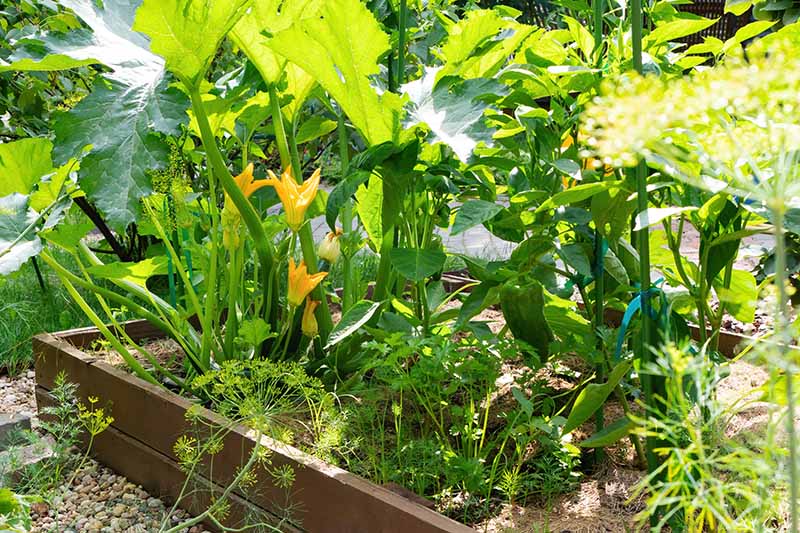

Just don’t forget – nitrogen is not the only plant nutrient that’s necessary for healthy growth!
Sharing Space
Good companions also share space above and below the soil in a complementary manner, thanks to their different growth habits.
Remember the three sisters, corn, squash, and pole beans? In a three sisters community, space is shared above the soil: squash has a spreading growth habit, corn grows straight and tall, and pole beans climb.
The three sisters also share space below the soil.
A study in the Annals of Botany studied the roots of these traditional garden companions and found that the three vegetables have different nutrient foraging strategies, which contribute to their complementarity.
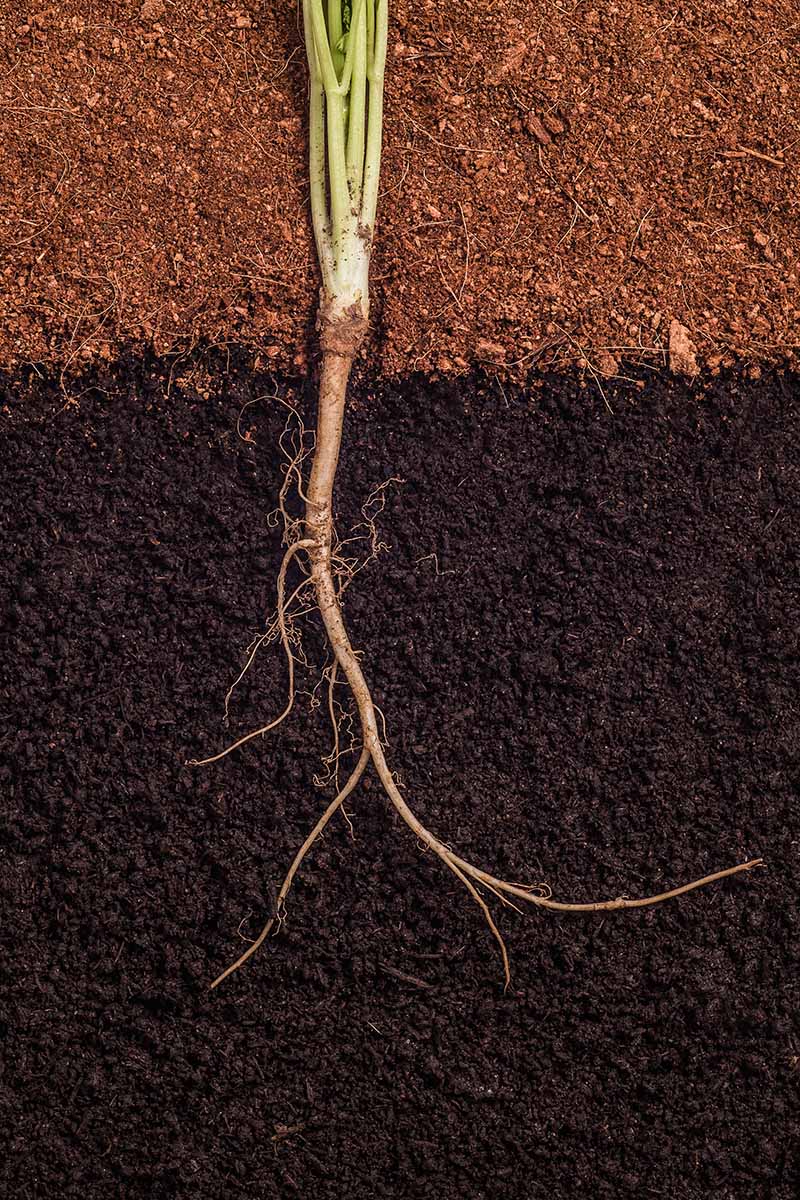

This is simple logic, if you think about it. You wouldn’t want to plant three root vegetables that grow at the same rate in the same space – such as carrots, beets, and potatoes – because they would potentially crowd each other out.
However, you can grow root veggies such as carrots and radishes together, because radishes grow so quickly. By the time the radishes are ready to harvest, the carrots are still just getting going.
Another complementary combination would be carrots, lettuce, and peas, one that would work beautifully in a square foot garden.
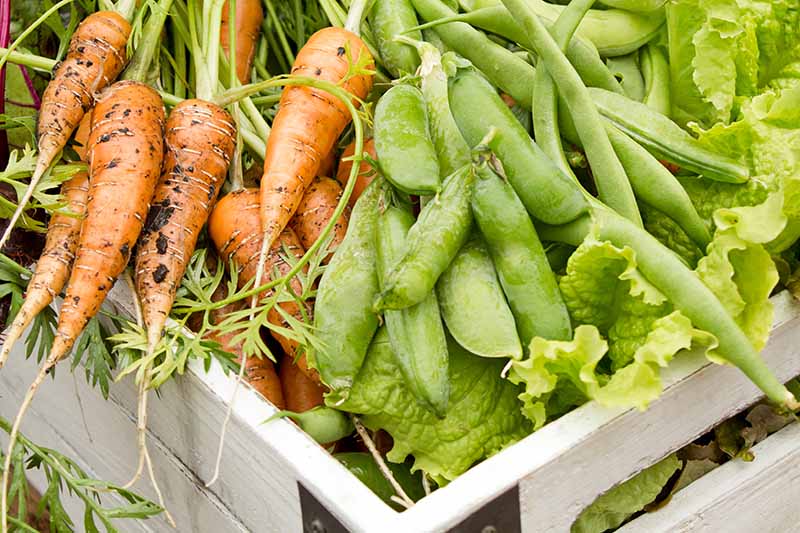

These three vegetables have very different growth habits, and they won’t compete for space or sunshine if oriented properly.
Here’s what I mean by that. For a spring garden, when you don’t have to worry about your crops overheating, always be sure to place your shorter vegetables on the southern side of your garden plot.
If you grow your carrots in the shade of your pea trellis, they won’t get enough sun and will fail to thrive.
However, as we discussed in the section on creating shade, once the summer heat settles in you might want to grow a heat-sensitive crop like lettuce in the partial shade of your trellis, now planted with pole beans for summer.
Another combination which illustrates this concept is a grouping I learned from Allison Greer’s “Companion Planting for the Kitchen Gardener,” available on Amazon.
Companion Planting for the Kitchen Gardener
Greer recommends pairing brussels sprouts with onions and nasturtiums. The brussels sprouts have an upright structure, the onions produce their bulbs under the soil, and the nasturtiums spread, forming a ground cover.
Not only do these three work well together – they also look quite attractive as an ensemble!
Avoiding Allelopathy
While many plants can thrive and be helpful to each other in the right combinations, some are quite unfriendly to each other, and it’s important to know which ones make bad companions as well.
These vegetative foes have allelopathic, or harmful, effects on their neighbors – a survival strategy these species have developed to keep soil resources for themselves and discourage competing species.
Sunflower and black walnut are perhaps the most common species with allelopathic effects – both of which might be found in your own backyard!
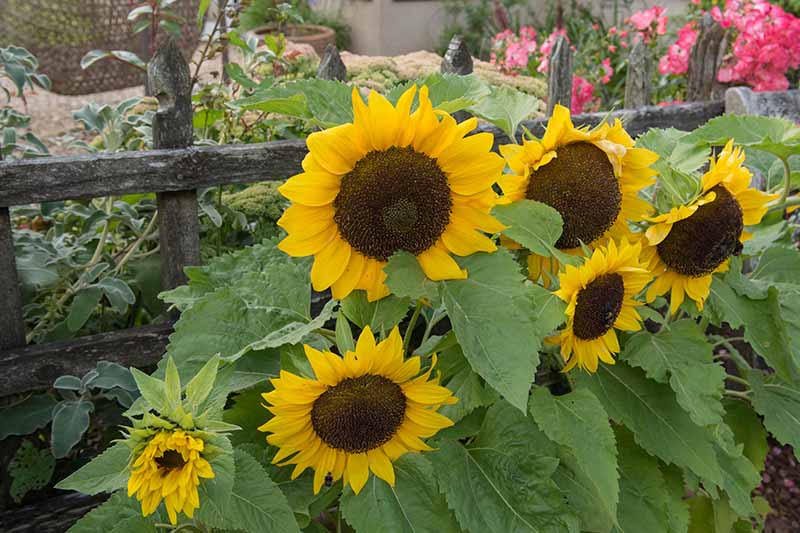

Research in Weed Science shows that sunflowers negatively affect the growth of soybeans, sorghum, rice, mustard, tomatoes, beans, and corn, among others.
All parts of the sunflower plant release chemicals that can stunt the growth of these and other crops when grown nearby.
Rather than mixing sunflowers in with my other garden veggies, or forgoing them altogether, I plant mine at the edge of the garden where they won’t affect my other edible plants.
Friends for Life
In this article I’ve focused primarily on annual crops, but you can also apply these concepts to your berry bushes, your orchard, and even your ornamental landscape plantings!
Ready for a review? When choosing the best companions, you’ll want to include herbs, fruits, veggies, flowers, bulbs, shrubs, or trees that are:
- Insectaries: attract predatory and parasitoid insects with nectar, pollen, and shelter.
- Repellents: deter pests through olfactory or visual confusion.
- Trap Crops: attract pests away from crop.
- Nitrogen fixers: add nitrogen to the soil and won’t compete for this nutrient.
- Light feeders: have low nitrogen requirements and won’t compete for this nutrient.
- Ground covers: act as cover crops for water retention, soil protection, and to hinder weeds.
- Shade providers: offer protection in the form of shade from hot sun and while plants are getting established.
- Support providers: offer a structure for other plants to climb on.
- Non-allelopathic species: do not contain compounds harmful to neighboring species.
When choosing your garden buddies, consider what you need for your crops, and choose companions that serve multiple roles. And be sure to choose a variety. Remember, Darwin was down with diversity, and we should be, too!
And if you want to take an even deeper dive into the science of companion planting, I recommend checking out “Plant Partners: Science-Based Companion Planting Strategies for the Vegetable Garden” by Jessica Walliser.
You can pick up a copy on Amazon.
Plant Partners: Science-Based Companion Planting Strategies for the Vegetable Garden
Companion planting may not be an exact science – yet – but now you know that there certainly is some proven science behind it.
And although not every scientific experiment proves the benefits, a growing body of research shows that companion planting has its place in agriculture, and can help bolster the home garden as well through biological pest control, protection, support, and the sharing of soil resources.
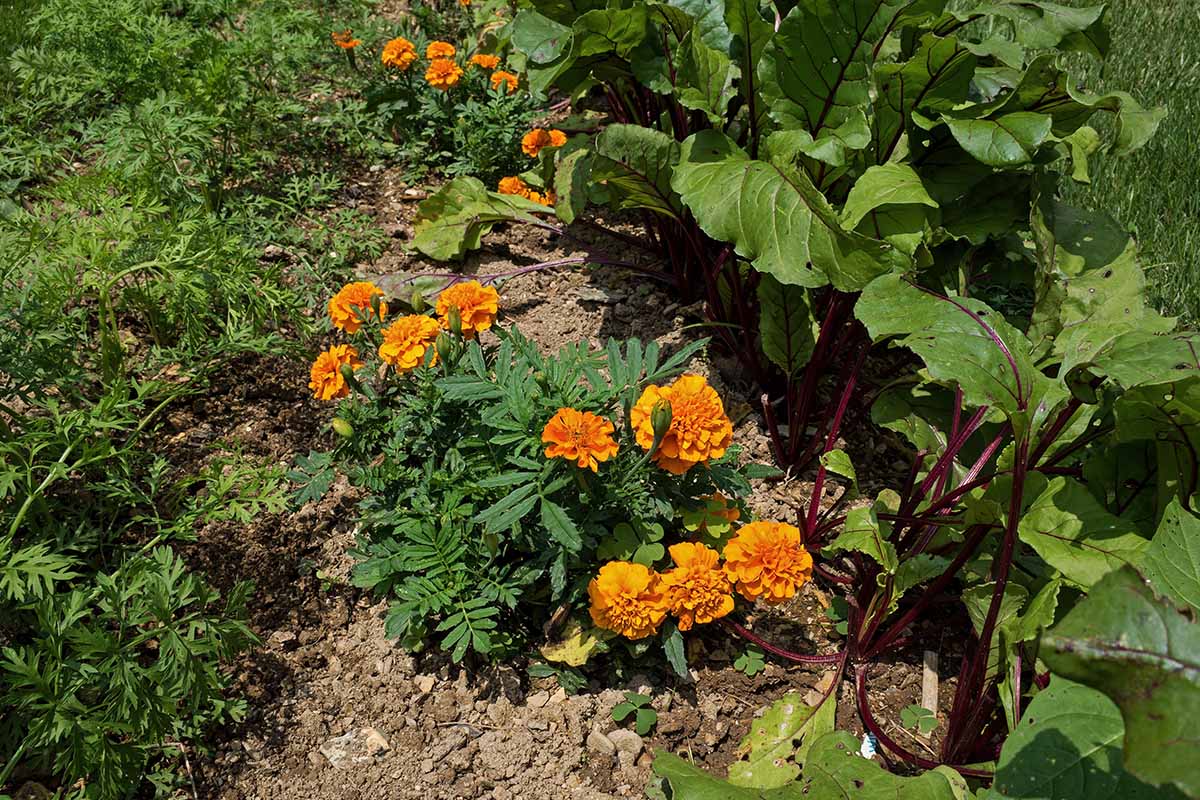

And we’ve only scraped the surface here! There are even more benefits that good companions can bring to the garden – but the ones described in this article will give you a good place to start when planning your garden combinations.
Has this article changed your thinking on this topic? Do you have any winning combinations of your own that you swear by? If so, let us know in the comments section below.
And if you’re looking for more thought-provoking articles on gardening, take a gander at these next:
[ad_2]
Source link





